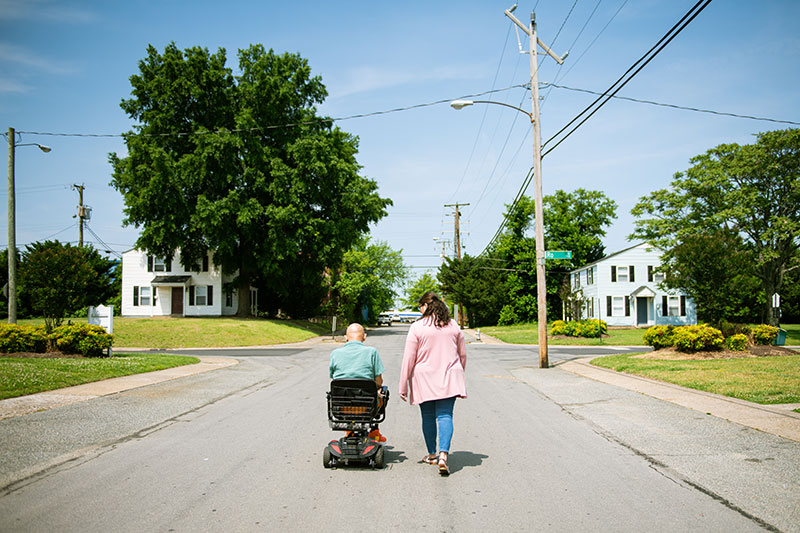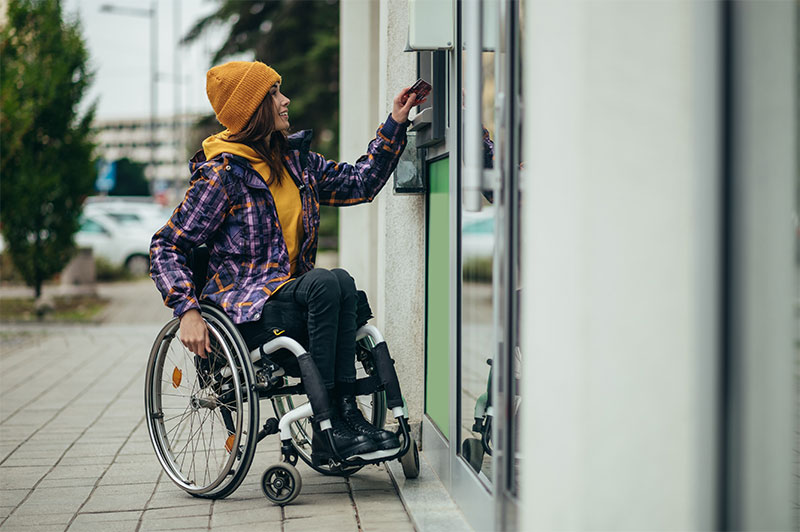Explore the Affordable Housing Crisis for People with Disabilities
Affordable housing is a problem across multiple demographics. However, for people living with disabilities, the problem of finding secure and affordable housing is particularly significant.
Disabled individuals looking to live more independently face unique barriers in securing stable and affordable housing, a problem that increases their vulnerability to homelessness, institutionalization and incarceration. This is an ongoing crisis, and only by understanding its scope and consequences can we advocate for policies and solutions that allow people with disabilities to live with dignity in safe and affordable housing.

The Scope of the Affordable Housing Problem for Disabled People
Affordable housing is increasingly out of reach for many Americans. Unfortunately, among the hardest hit by this trend are people with disabilities. The Priced Out report, produced by the Technical Assistance Collaborative and the Consortium for Constituents with Disabilities (TAC), highlights the severity of this crisis. Disabled individuals relying on Supplemental Security Income (SSI) face almost impossible challenges in securing housing without additional support.
Among the worrying statistics the TAC report highlighted are:
- Housing affordability: The 4.1 million people with disabilities ages 18 to 64 who receive SSI cannot afford an apartment in any housing market in the United States.
- SSI inadequacy: SSI payments fall drastically short of covering rental costs, leaving many disabled individuals at risk of homelessness, institutionalization or incarceration.
- Lack of rental assistance: 84% of disabled people with low incomes in the U.S. are eligible for housing assistance but do not receive it.
This is about more than just having a roof over your head, although this is of obvious importance. For disabled people, the consequences of homelessness can be devastating in many ways.
The Consequences of Housing Insecurity for the Disabled Community
The TAC study paints a bleak picture when the consequences of homelessness within the disabled community are considered. The effects can be profound, incredibly limiting and far-reaching.
Among the major consequences of the housing crisis are:
Homelessness
People with disabilities are disproportionately represented among the homeless population, facing unique challenges that worsen their living conditions.
- 31% of all homeless individuals experience chronic homelessness and have a disabling condition.
- 65% of these individuals are in unsheltered locations, further endangering their health and safety.
Incarceration
A significant number of incarcerated individuals have disabilities, often leading to a cycle of institutionalization that is difficult to break.
- 66% of incarcerated individuals self-report a disability, with Black, Hispanic and multiracial disabled men being especially overrepresented in prisons.
- More than 83% of people in state and federal prisons report previously residing in another institution, such as other correctional settings or psychiatric hospitals.
- National research suggests that up to 15% of incarcerated individuals experienced homelessness in the year before their incarceration.
Institutionalization
Many people with disabilities live in institutional settings due to the lack of affordable housing, which restricts their living options and poses significant health risks. Nearly 900,000 disabled under age 64 reside in these facilities, often due to a lack of affordable housing rather than a need for residential care.
This limits residentials choices and presents serious health concerns, as evidenced by the high COVID-19 death rates in nursing facilities. These statistics highlight the urgent need for comprehensive policies and solutions to address housing insecurity and its devastating consequences for people with disabilities.
SSI and Housing Affordability
Supplemental Security Income (SSI) is a critical financial resource for many in the community. However, it falls drastically short of covering the costs of housing in nearly every market in the United States. The Priced Out report illustrates the stark reality faced by those relying on SSI.
- Inadequate SSI payments: The national average monthly SSI payment is $983, which is only 17.5% of the national median income. This amount is insufficient to cover even modest rental costs.
- Extreme rent-to-SSI ratios: In Santa Cruz-Watsonville, California, the rent for a modest one-bedroom apartment costs 142% of an individual's entire SSI income. Even in the most affordable markets, such as Dallas County, Missouri, rent consumes 64% of SSI income.
- Worst-case housing needs: The U.S. Department of Housing and Urban Development (HUD) defines this as households paying more than half of their income toward rent or living in severely inadequate conditions. At least 1.5 million SSI recipients fall into this category.
Security within rental complexes for people with disabilities is a critical concern that is often overlooked. Accessible properties must be equipped with features like well-lit common areas, secure entry points with ramps or automatic doors, 360 panoramic security cameras and emergency alert systems. Additionally, staff training on assisting people with disabilities during emergencies is essential. As the housing crisis intensifies, the competition for these accessible and secure properties grows, highlighting the need for inclusive and comprehensive security measures to protect and empower this community.
These figures underscore the urgent need for increased federal rental assistance and affordable housing options tailored to the needs of people with disabilities.
Potential Solutions to the Housing Crises for Vulnerable Individuals
Charles Chan, CEO of Landlord Studio, emphasizes the importance of increasing affordable housing options for people with disabilities. "Providing stable, affordable housing is crucial for improving the quality of life for individuals with disabilities," says Chan. "It's essential that we expand federal rental assistance and increase the supply of low-cost rental units to ensure that everyone has access to safe and secure housing."

While the private sector will have a large role to play in addressing the crisis, the federal government must take the lead to ensure that affordable housing is accessible to people with disabilities.
Make no bones about it, there is no magic wand that is going to make the problem vanish overnight. However, there are undoubtedly steps that can help to make inroads into a growing problem.
- Increase federal rental assistance: Data from the Priced Out report and long waiting lists for housing vouchers highlight the need for more federal rental assistance.
- Increase the supply of rental housing: During the pandemic, many communities used federal funds to provide rental assistance, but the lack of affordable units remains a problem. The Affordable Housing Credit Improvement Act could increase the development of low-cost rentals, targeting those with extremely low incomes or experiencing homelessness.
- Target vouchers to the most vulnerable populations: The success of the Emergency Housing Voucher program during the pandemic shows the effectiveness of targeted support.
These solutions would begin to address the root causes of the problem and begin to mitigate the affordable housing crisis for people with disabilities. Together, we must advocate for policies that ensure all individuals can access safe and stable housing.
Pre-Register for Abilities Expo Today...It's Free!
Sign up for the Abilities Buzz
Stay in the know on disability news and info.
